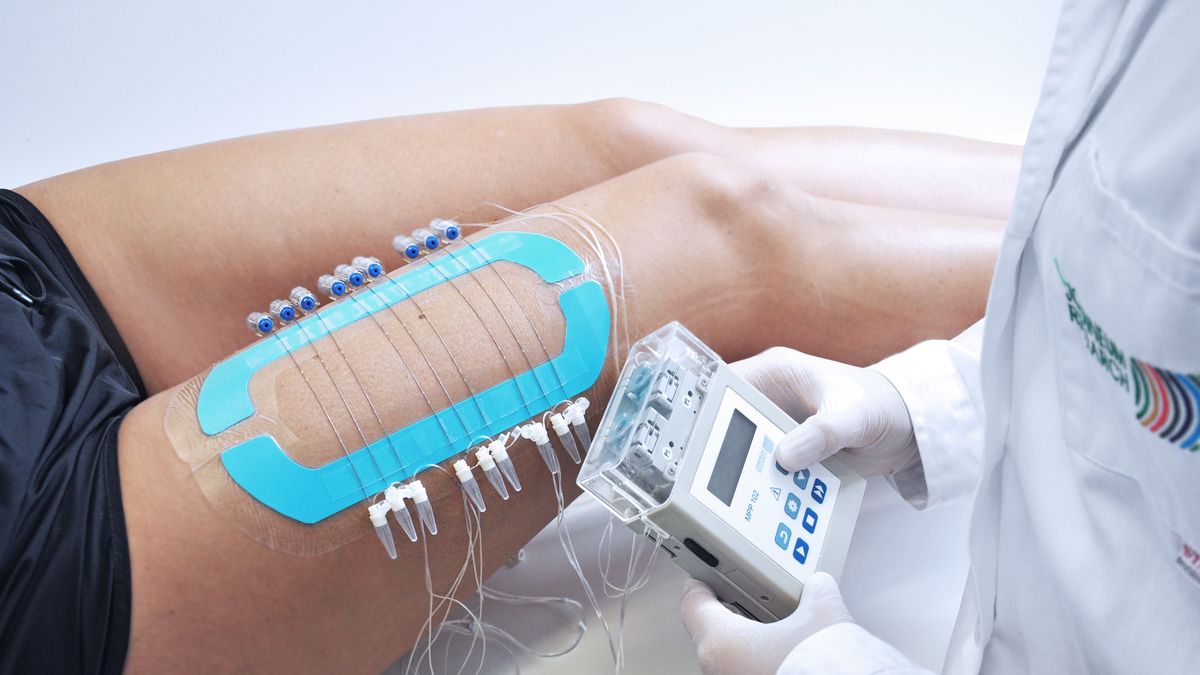Dermal Research at JOANNEUM RESEARCH HEALTH
Frank Sinner, Vice President Regulatory & Strategic Affairs at HEALTH - Institute of Biomedicine and Health Sciences, introduces OFM in a new video interview series, highlighting projects and services in the area of dermal research.

What is HEALTH?
HEALTH is an Institute of Joanneum Research, a publicly owned research organization, that bridges basic science to applied research and solutions. HEALTH has a multidisciplinary team of scientists work closely together with medical professionals, especially from the Medical University of Graz. By combining the innovative power of our scientists with an industry-driven thinking, we translate innovative ideas to solutions and help to increase the quality of life of patients.
Why did HEALTH decide to focus on dermal drug development?
In August 2005, we became aware of the huge potential of Open Flow Microperfusion (OFM) in skin research. So we decided to enter into skin research and developed an optimized dermal OFM for use in skin. We are placing dOFM probes in the dermis and we are thus able to assess the API (active pharmaceutical ingredient) profiles. We assess API profiles in the skin for up to 24 hours in-vivo in clinical settings and use a parallel setup to assess biomarker response to the drug in affected and unaffected skin. Over the last 15 years we developed a unique set of methods to assess skin PK (pharmacokinetics) and PD (pharmacodynamics) based on our core technology Open Flow Microperfusion. These complementary methods include microdialysis, tape stripping, punch biopsies and techniques to determine transepidermal water loss (TEWL) and stratum corneum thickness.
What are HEALTH’s key strengths?
HEALTH combines the innovation of basic research with result-driven thinking of pharmaceutical industry. In this regard, we act as a boutique CRO and we offer customized and science-based services for drug developing companies. The institute HEALTH is ISO EN 9001 and Good Laboratory Practice (GLP)-certified and we perform clinical and preclinical studies in collaboration with the Medical University of Graz which is located just next door to our institute.
What makes your dermal research unique?
HEALTH has developed a unique set of methods, which we use to assess pharmacokinetics and pharmacodynamics in the dermis. We offer ex-vivo, in-vitro and in-vivo studies to assess the drug profile over time in skin as a site of action and drug effect by looking at different biomarkers in-vivo in skin. Our core technology is called dermal Open Flow Microperfusion (dOFM) and we use dOFM to assess PK and PD in the dermis for up to two days nonstop in a clinical setting. We can place up to 20 dOFM probes in one participant making very complex clinical settings possible. In addition, we can use dOFM also in preclinical studies in healthy but also in disease models to help industry to develop efficient and safe drugs.
What are HEALTH’s goals?
HEALTH wants to advance the field of skin pharmacokinetics and pharmacodynamics. We will further optimize and develop innovative methods to assess PK and PD in skin and we want to better understand skin penetration, disease formation in skin and also to develop new, innovative tools to help to de-risk and to make more efficient the drug development process of drugs to treat skin diseases.
How will you achieve HEALTH’s goals?
To achieve our longterm goal we want to combine our unique set of methods to non-invasive methods such as RAMAN or coherent RAMAN. We have also started several collaborations to combine dOFM with pharmacokinetic modelling. Combining dOFM with RAMAN and modelling has the potential to significantly reduce the risk in drug development and to better understand disease formation in skin. In the field of topical generics we believe that dOFM will be a standard method in the future. We will thus commercialize our dOFM services for bioequivalence for topical generics and are looking for an alpha customer.